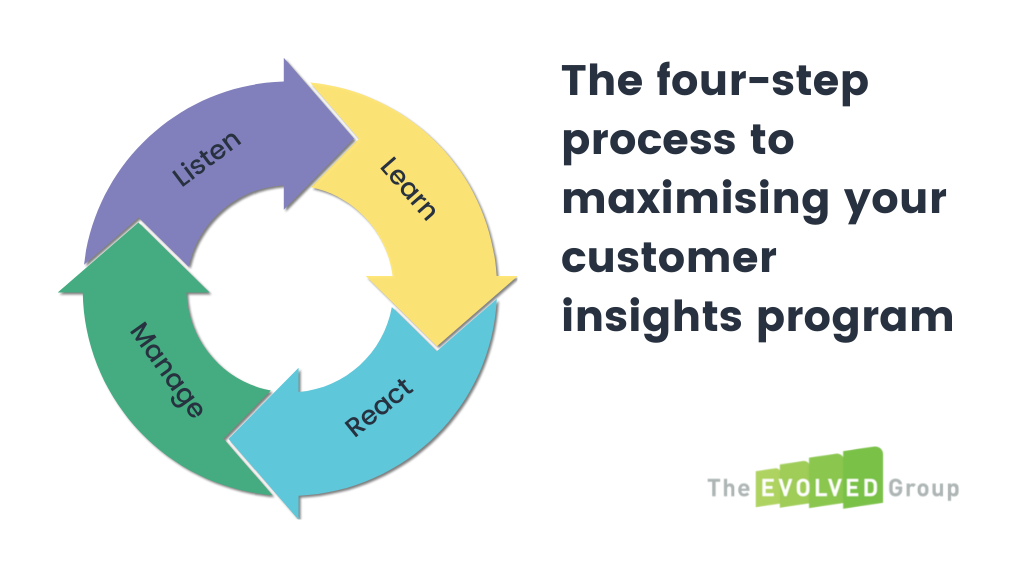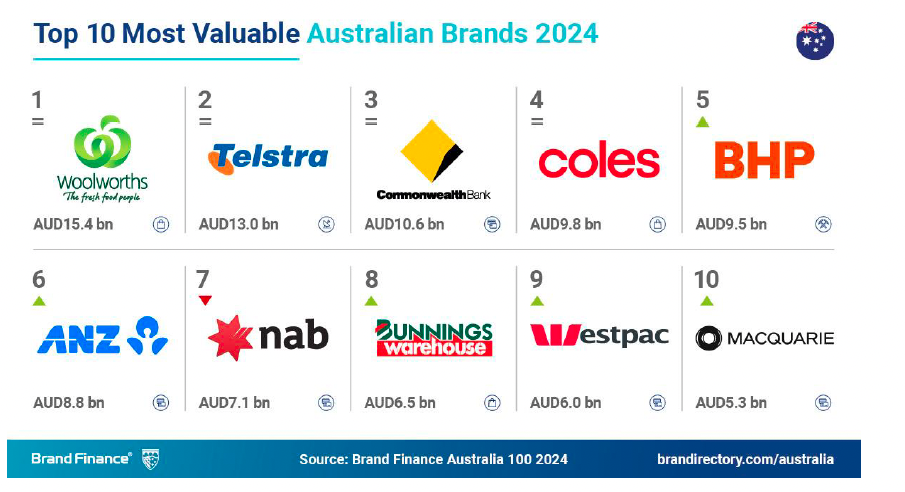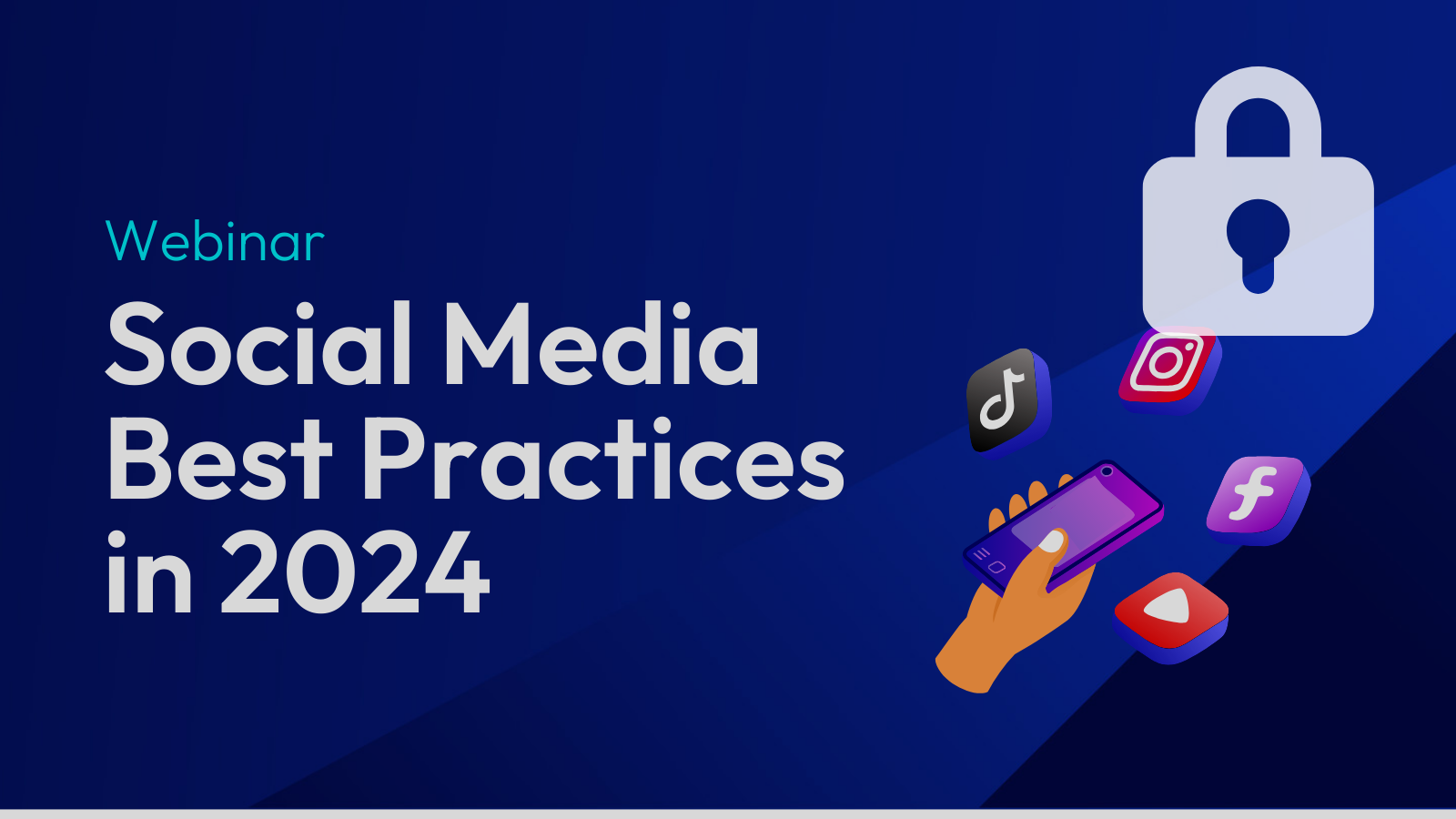The Four-Step Process to Maximising Your Customer Insights Program

By: Jess Bordin, Marketing Manager, The Evolved Group

Corporates and agencies are working harder every day to stay relevant in our hyper-connected and ever-evolving world. There’s rivalry for attention and more channels to the consumer than ever before, meaning the efforts of marketing teams around the world are at a higher risk of getting lost in white noise.
As marketers, we are inundated with data from a smorgasbord of sources, which can sometimes become overwhelming. This means that some businesses don’t utilise the full potential of the data because their systems are unable to make it meaningful for them.
As costs rise and attention plummets, marketers have the challenging task of building awareness. So, without the right insights, how can we ensure our message reaches our customers in the most cost efficient and sustainable way, that delivers results every time?
Step 1. Listen
This may seem obvious, but many companies don’t spend enough time listening… really listening. This usually results in a continuous loop of incorrect assumptions about a customers’ thoughts and feelings.
When you listen to the customer data, you’re fundamentally providing a window to manage the customer experience, improve customer satisfaction and fuel customer loyalty.
Post-purchase surveys are now the norm – this provides a golden opportunity to engage with customers. Those who are happy should be thanked through a reply to let them know they’re valued. Those who are unhappy should be approached with gratitude and asked how their experience could have been improved.
If a trend emerges, for example, a product receives a significant amount of similar negative sentiments within a short timeframe – it’s a sign that investigating may be required. The ideal situation would be to initiate market research to see how any change — big or small — impacts the feedback being received. The other option is to have a knee-jerk reaction and make changes based on a few comments – risking upsetting a larger portion of other customers.
Product improvements can facilitate customer loyalty, but if we ‘improve’ the wrong thing, it can land us in hot water. We’ve seen countless examples of companies getting it wrong simply because they didn’t listen.
For example, all Australians can remember the outrage we collectively experienced when Arnott’s Shapes came out with ‘new and improved’ flavours in place of its longstanding favourites. Loyal customers took to all forms of social media to demand the old flavours back, and after four short months, all original flavours were back on the shelves.
Limitations of traditional market research methods
- Traditional surveys (quantitative) are unable to express true sentiment due to the ticking of pre-defined boxes and the lack of adaptability in open-ended questions.
- Focus groups (qualitative) are great for uncovering ideas and issues that initially may not have been considered. They help marketers understand the decision-making process right from the source. There are, however, some limitations with running focus groups, including a lack of representativeness and groupthink, where participants feel pressure to conform to the opinions of others in the group.
- Increasingly, companies are realising the benefits of Conversational AI. This technology, which combines the benefits of qualitative and quantitative research, allows customers to express their thoughts and feelings in their own words by creating a two-way chat with a Conversational AI chatbot. Rather than all respondents getting the same set of questions, Conversational AI analyses each response given, and personalises the following questions based on keywords picked up. For example, if 10 different people have 10 different problems, Conversational AI can probe further into the specific topics and words being used to get to the heart of the issue.
Step 2. Learn
Customer profiles play a fundamental role across the entire business. No matter the size of the business or industry you’re in, the customer is everything. This puts marketing teams on a non-stop mission to predict customer behaviour based on past campaign performance and customer feedback – with the aim of increasing ROI.
As the world becomes more crowded with competition, it’s crucial to stay ahead of the curve and update customer profiles and personas as we continue to learn more about them. The analytics applications and programs to gather this data must be fast and user-friendly to make them actionable.
The more customer insights you have, in real-time, the better you understand:
- Motivations, key drivers, and most significant pains or problems
- How they currently solve this problem (potentially providing insight into the use of competitor products or services)
- The benefits they are looking for
- How much they are willing to spend
- How they consume information
- Their product and UX preferences
- The small details that are important to them
Leaders need a platform that makes data management easy – allowing more time to build a customers’ story, instead of wrestling with data. The best platforms allow marketing teams to quickly grasp the data, facilitating the speedy optimisation of upcoming campaigns and the application of new A/B tests where possible.
Step 3. React
Now that you have the insights, it’s time to act on them, tackling the most critical pain points as top priority. It’s important to ensure tasks relating to actioning the data are assigned to the best-suited and capable individuals who understand the goals and intent. Lack of accountability during this step can mean that no action is taken based on insights gleaned. Budget may go to waste, and the lack of action could be detrimental for business.
It’s also about reacting at the right time. For example, product launches or enhancements need marketing campaigns around the time of peak interest or relevance. Understanding customer patterns through the data is essential for pinpointing the perfect launch. The better your insights, the more successful your campaign.
As mentioned earlier, having a knee-jerk reaction to a small amount of feedback runs the risk of disappointing a larger portion of customers. One way to ensure this doesn’t happen, is to do a deep-dive into the insights. Were all the unhappy customers from one store or one specific demographic? Did they all have something in common which meant they all had a similar negative experience? This is where the great customer insights platforms are separated from the rest – a great platform will uncover key insights like this almost immediately.
Step 4. Manage
This step revolves around continuous optimisation. Businesses can continue building interest by engaging customers through various touchpoints e.g. nurturing emails, in-depth webinars, or retargeting – depending on the product or service being sold.
Monitoring the data and customer feedback is the only way to spot live trends, and the easiest way to observe the impact of changes made based on insights. One of the most common ways to understand a customers’ feelings towards your business is by Net Promoter Score or NPS. An NPS rating provides your business with a number between -100 and +100, based on the percentage of positive, negative and neutral ratings received from customers. Check out where your business ranks by industry here.
Marketers should ensure findings are shared with all relevant parties and understand, ensuring comprehension of what the results mean. Having one source of truth where data can be easily viewed, interpreted and managed can facilitate a marketing teams’ ability to intelligently react to insights rather than make panicked decisions.
Over to you
Customer insights provide leaders with a plethora of opportunities to grow business. Insights help us understand more about our current positioning in the market and how to leverage the future.
Brands need to ensure they are wholeheartedly listening to the exact words their customers want to say, not boxing them into pre-determined answers where businesses assume everyone will fit.
Having a clear end-to-end process for understanding customers and prospects is essential in maintaining buyers for any business. A deeper understanding of one target market may uncover other niches, all while increasing satisfaction within the current customer base.
Find out more
To find out more about Evolved, check out our insights platform or our market research capabilities.
This article was contributed by The Evolved Group.





